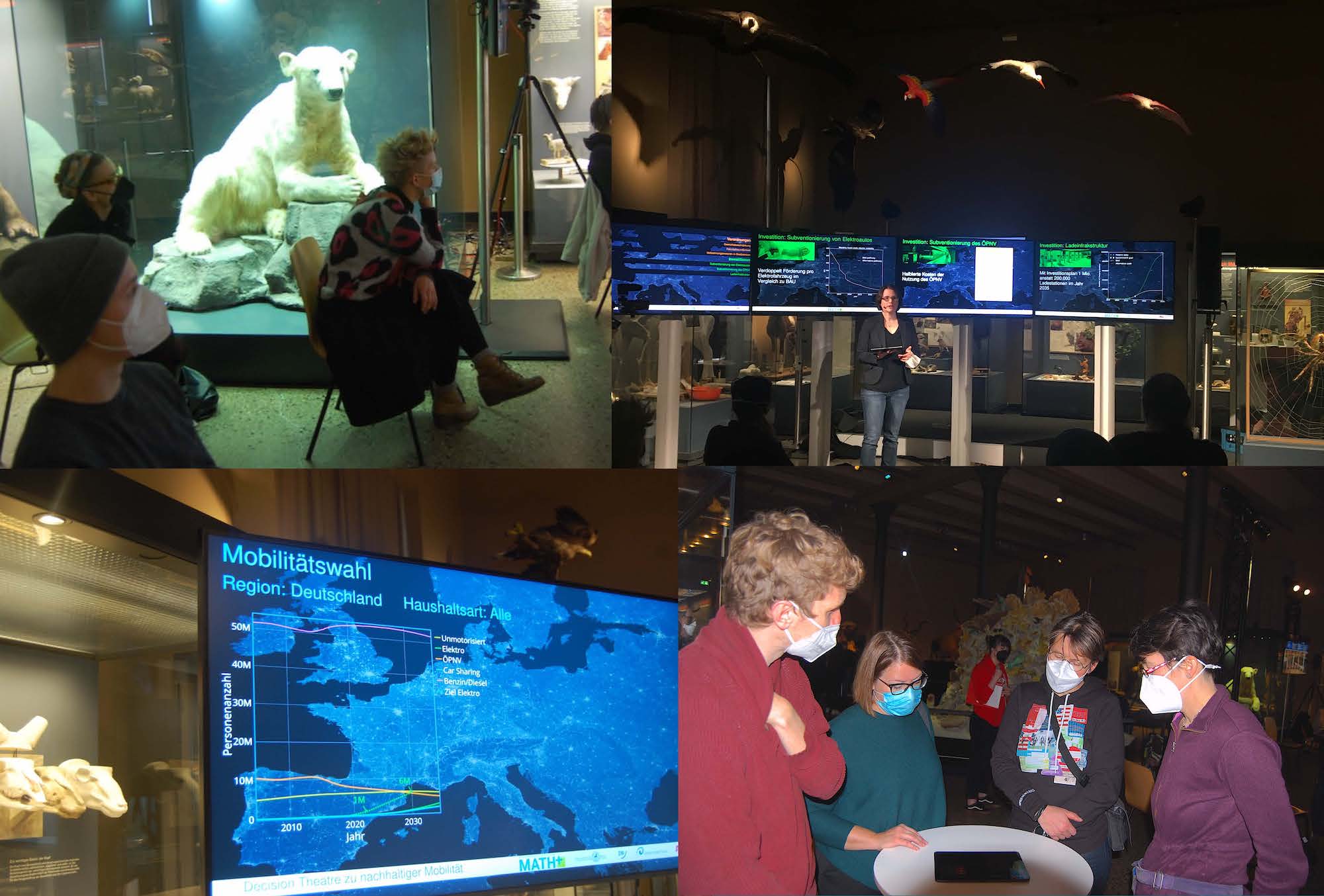6 November – “Decision Theatre” @Berlin Science Week

Participants near Knut (top left), Sarah Wolf DT-Introduction (top right), Screen: Mobility Choice (bottom left), Discussion Group (bottom right) | © MATH+
On 06 November 2021, the mathematicians Sarah Wolf (FU Berlin) and Steffen Fürst (ZIB) presented the “Decision Theatre” as part of the Berlin Science Week and invited to a discussion about sustainable mobility (event language was German). The “Decision Theatre” is an innovative science communication format that supports discussions about societal challenges by using application-oriented mathematics.
The event at the Museum of Natural History was fully booked, and the participants clearly felt comfortable in the immediate vicinity of Knut, the famous Berlin polar bear. At the same time, a live stream enabled viewing, and an interactive online survey tool encouraged active participation from outside.
Sarah Wolf and Steffen Fürst first introduced the mathematical agent-based modeling that underlies the “Decision Theatre”. Then, divided into three small groups, the participants vividly discussed and selected possible regulations, investments, and incidents that could drive sustainable mobility. Later, in the final part of the event, potential consequences of these group “Decisions” appeared on screens (“Theatre”) via mathematical simulations. The results of the three groups could be compared, the implications for future emissions seen and understood. In addition, an interactive online survey tool was used to map the choices of the live stream viewers.
The participants were enthusiastic about the opportunity of using applied mathematics to discuss important issues facing society and to see the impacts of actions displayed directly on the screens. The “Decision Theatre” can be applied also to other social issues. It further is at the basis of the MATH+ project Schule@DecisionTheatreLab, which aims to promote the exchange between schools and scientists by showing the fascination for mathematics and its possible applications.

